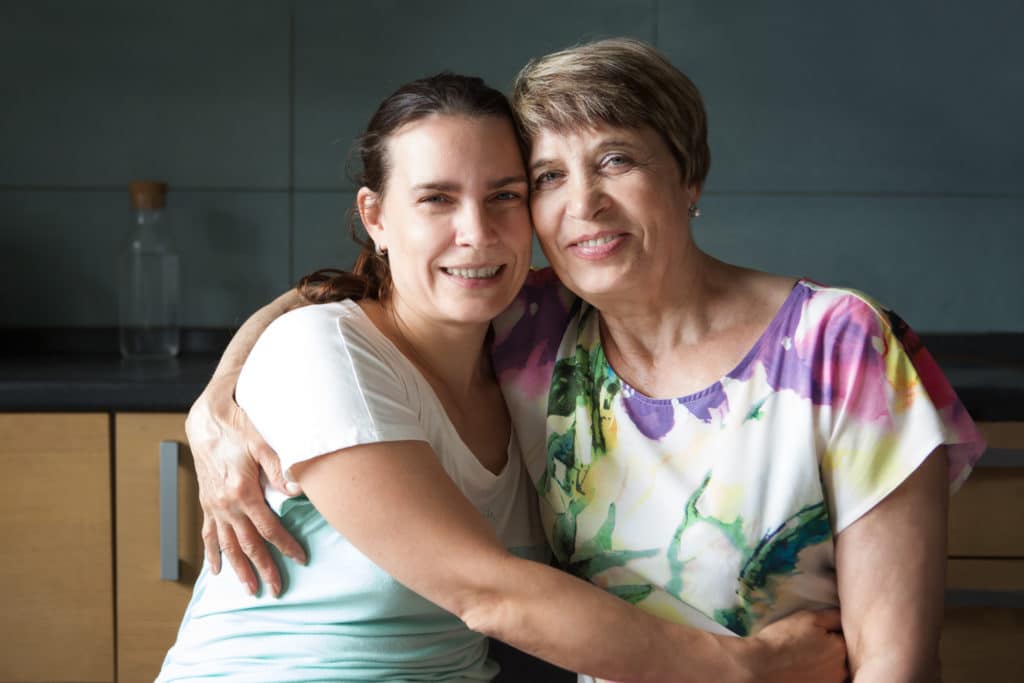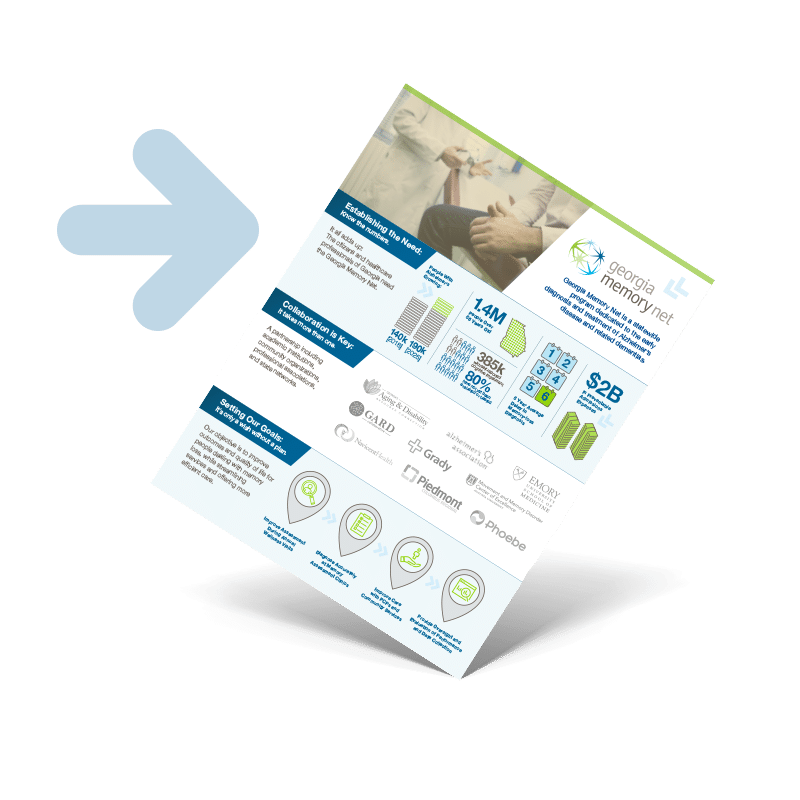How Can I Keep Myself and My Loved One Safe and Happy while Sheltering in Place?

This is a great question and one that must be on the minds of families all over the state. Let’s look at both parts of the question.
Safe. First, the scary part: How to stay safe? The short answer is to pay attention to and take seriously the messages and guidelines coming from the Governor’s office and the Center’s for Disease Control and Prevention (CDC). Guidelines and suggestions can be found at https://www.cdc.gov/coronavirus/2019-ncov/index.html. But here are some basic facts:
The virus appears to enter through pathways to the lungs—the mouth, the nose, and even the eyes. That’s why we’re being told not to touch our face—because we are likely to pick up the virus from touching things it sits on. And that’s why we are told to wash our hands frequently and well (20 seconds with soap and warm water) and keep surfaces clean—so that if (when) we touch our face, there is no virus on our hands to get near those points of entry.
So if you have a clean living area and you don’t go out and no one—and nothing—comes in, you should be safe. But that’s impossible. You probably have to go shopping and you may take your person with you. Or people may bring groceries and supplies to you. Or you may have help coming into your home. That’s when action is necessary:
- If you go out, wash your hands right away when you come back (same for your person)
- You probably should sanitize the door by which you entered and any surfaces you or things you brought back touched (like the counter where you put your groceries); the same with the things you bring home: wipe them down with a sanitizing cloth (and then wash foodstuffs after sanitizing)
- The same routine applies if groceries or meals are delivered. Throw out the delivery bags, and sanitize things, and then wash your hands—the outside just came inside, and you just touched it.
- If someone comes into your house, ask if they have checked themselves for signs of the virus (fever, cough, sore throat) and if they are okay, ask them to wash their hands well.
- If these are health care or day care workers, check to see whether they have other clients they are visiting and ask them what precautions they are taking in moving from client to client.
Happy. Perhaps a good place to start here is to “take your own pulse” about how you are experiencing orders to shelter in place and practice social distancing. They don’t mean you are imprisoned in your home or placed in solitary confinement. They do mean that any in-person group activities in which you or your loved one took part are now off limits. So, for instance, you cannot go to a worship service or have your person attend a day program. Likewise other activities you might have enjoyed from a distance (like watching sports on TV) are not available either. Those are real limitations, not only because they deprive you of something that might make you and your person happy, but because they create holes in what might have been an established schedule of events, holes you now have to fill.
Happy, in the context of caregiving, generally means that your person does things that draw him or her in and keep the person involved for a time and in a way that seems pleasant or satisfying. Very likely you already have a whole toolkit of such activities and task that you know make the person happy. But now there are those holes to fill. Here are some thoughts:
- Repeat activities the person enjoys. An activity usually done in the morning may be just as enjoyable if done again in the afternoon. Take advantage of the loss of recent memories that accompanies most dementing illnesses: the person likely won’t recall that you did the same activity this morning or yesterday.
- Create new activities. Start with what the person used to like to do and was good at. You probably already have some activities built around those “likes,” but can you build on them—or are there others you haven’t tapped yet? If you have family, ask others what they remember your person liking to do. They may think of things you don’t.
- Seek alternate versions of group activities. If attendance at religious services has been an important part of your schedules, see if your place of worship is providing online services. If the person had been going to a day program and enjoyed movement or musical activities, search online for chair exercise programs the person (and you) can do. Search for videos of the kinds of music the person enjoys. Let these online resources provide opportunities for engaging the person.
- Go outside. Take advantage of the Georgia weather. Walk with the person, if you are both able. Or just sit outside and watch as the scene goes on in front of you.
- Connect virtually. Reach out to family and friends to schedule virtual visits with you and your person. FaceTime and Skype can bring these important people right into your home and with no risks to safety.
No pressure, but: You’re It! Now, even more than before COVID-19, your ability to take care of the person is critically important to that person’s well-being. It is so important to let yourself admit that you may be feeling more than the usual amount of stress. The pandemic situation itself is worrying and it is adding to your task as a caregiver. It may also be increasing your own sense of isolation. The easy thing to say here is “You need to take care of yourself.” Here are some things to consider:
- Recognize and acknowledge the added stress. Starting with this understanding is a good way to develop good coping strategies.
- Develop your own self-care toolkit. If you have not been doing anything for yourself to attend to your own well-being, start now. And if you have been engaging in self-care activities, which ones might you increase? What might you add? In what kinds of exercise, recreational, spiritual, meditative, artistic, or other activities might you find peace, relaxation, enjoyment, or satisfaction?
- Join in the person’s activities. See if some of the activities you design to occupy the person involve activities you enjoy as well—so that you can take part in them in a pleasurable manner.
- Identify opportunities for “self-time.” Make times in the person’s daily schedule when you can do something just for you—and take those opportunities.
- Make strategic use of others. If you can find others to come into the home for brief periods, do so—using the safety tips above. Let others let you get out of the home yourself. Run the errands you need to take care of, but also use some of that time just for you to do something refreshing for yourself.
A Worst-Case Scenario. Even though caregivers are superheroes, they are not immune from illness or injury. So, it is important to have a workable plan in place, should you have to be removed from the caregiving picture for a time. Although every caregiving situation is unique, they all have in common the reality that care has to be provided—somehow, somewhere—to ensure the person’s well-being. So here are some important elements to be included in such a plan:
- Build the plan with family and friends. You can try outlining a plan on your own, but get others involved as soon as possible. Let them help build the plan and let them identify what they will be able and willing to do in carrying it out.
- Establish a point person. Identify a person (or two) to contact immediately if the plan has to be set in motion. They can take over contacting others involved in the plan and getting things done.
- What to do if moving the person is the only choice; where and how? Depending on what your family and friends think might be possible—and depending on whether your absence from the home is likely short, long, or permanent—the person may be able to remain in place. But the plan should also take account of the possibility that she or he won’t be able to stay in the home. So the plan has to identify an alternative living arrangement—perhaps to someone else’s home or perhaps to an assisted living or skilled nursing facility. If the option looks as though it might have to be a facility, it will be important to have looked at the options and determined availability and affordability. In any plan to move the person, at least the broad details of how the move will take place and what will be moved with the person need to be worked out.
- Distribute the plan. Write the plan down—even if just an outline—and be sure that all involved have a copy of it.
- Returning back to normal. Plan how you will return to the home—and how the person will, too, if a move to another locale has been necessary.
Dr. Ken Hepburn is a gerontologist and professor in Emory’s Nell Hodgson Woodruff School of Nursing, he serves as the executive director for GMN’s Community Services Core.

Georgia Memory Net at a Glance
What is Georgia Memory Net and why does it exist? There’s so much information about Alzheimer’s and related dementias in Georgia, and how to diagnose and treat them, that it can become overwhelming. We’ve done our best to simplify the info into a clear one-page infographic.

